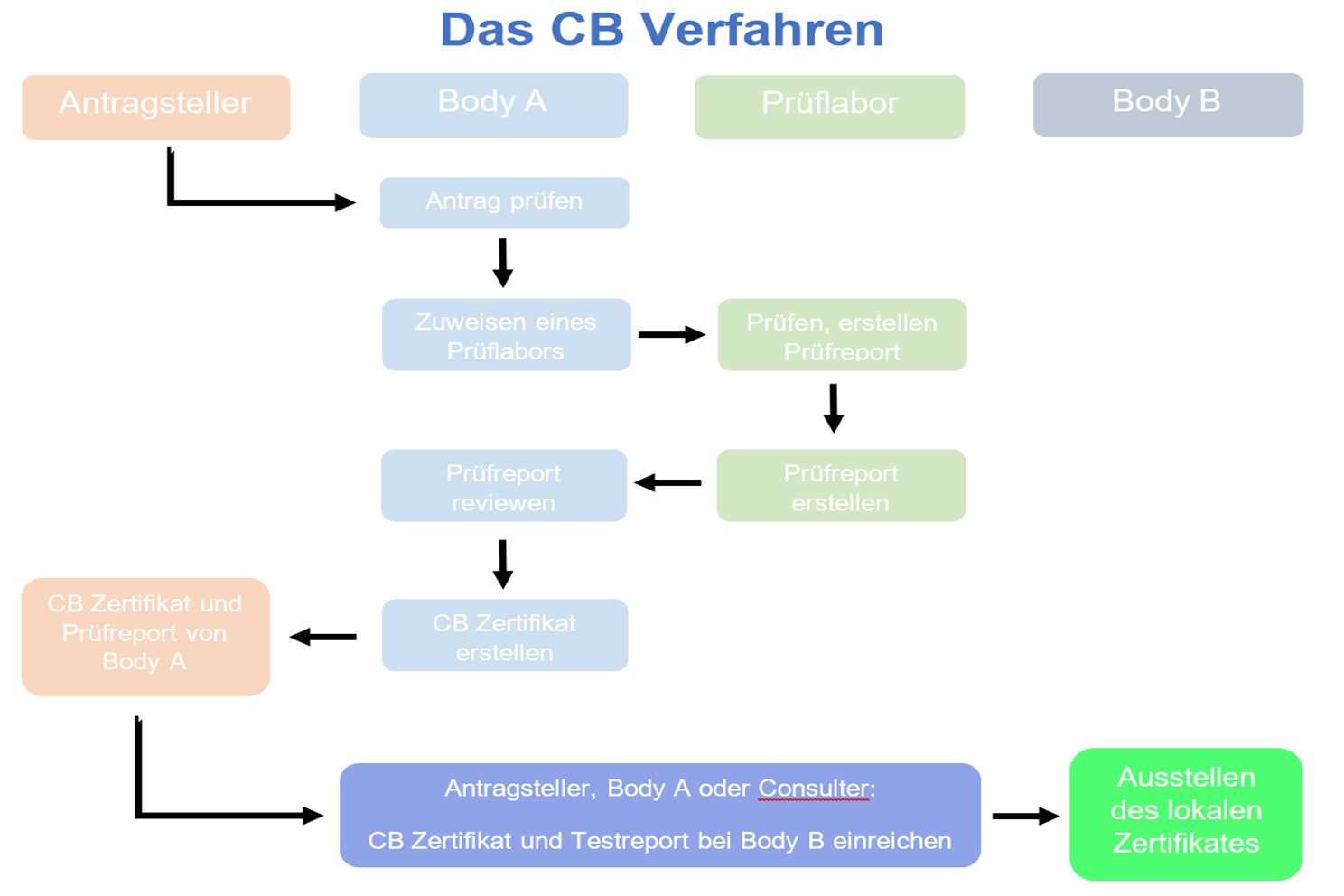The CB procedure simply explained
In one sentence:
Test results and CB certificates issued by one test laboratory or certification body, form the basis for certification in another country.
History of the CB procedure
Today’s CB procedure is based on the CEE procedure originally founded in 1926. The CEE procedure was converted into the CB procedure by the IEC in 1985 and has been operated by the IECEE organization to this day. The responsibilities within the CB procedure, which were originally divided between 4 different countries:
- IEC Central Office in Geneva
- IECEE Secretariat in Helsinki
- Web design and operation of the homepage in the USA
- IECEE CTL in Milan
was merged in 1999 in Geneva.
Graphic representation

More detailed description of the CB procedure
As simple as the procedure described above in one sentence is, there are a few things to consider when it comes to practical implementation.
The 1st test laboratory (CBTL A) creates a test report based on the tests it has carried out. The associated CB certification body (Body A) creates the so-called CB certificate. With this CB certificate and the associated CB test report, the product is submitted for certification to the certification body (Body B) in the target country. Usually without further tests, the local certificate of the target country is then issued based on the test report submitted. However, the procedure may also allow the certification body to request one or more test samples.
Important points that must be observed when using the CB procedure
This relatively simple implementation process is linked to a number of conditions that are not always easy to understand. I would just like to point out the most important ones here:
- Both the initial testing body and the certification body issuing the CB certificate (Body A) must be listed for the product itself or the associated standard in the CB procedure as “issuing / recognizing = I / R”.
- In the target country, the certification body must at least be listed for the product as “recognizing = R” in the CB procedure. It is therefore not sufficient for the testing laboratory and the certification body of Body A to participate in the CB procedure as such. This basic requirement must first be checked when selecting the test laboratory.
- It must be checked whether there are so-called national deviations from the standard applicable to the product for the target country. If necessary, these must also be checked and documented by the laboratory carrying out the tests.
- For components that are safety-relevant (e.g. power switch, power cord, power plug and other components in the so-called power circuit, which is directly connected to the supply network) and are used in the product to be certified, separate CB certificates and corresponding test reports must usually be available.
- Special features with regard to the different mains voltage and / or mains frequency in the target country may have to be taken into account during the tests by the first test laboratory. The countries Japan, Korea and Saudi Arabia (this is not an exhaustive list) are to be viewed particularly critically. There it is required that certain tests are carried out with the mains voltages and mains frequencies prevailing there.
- Until recently, a test report could not be older than 3 years in order to guarantee acceptance by a Body B. This restriction has been formally dropped and is no longer included in the ODs (Operational Documents). However, experience has shown that many certification bodies still do not accept older test reports today.
If these conditions are not met, the submitted documents may be rejected or so-called supplementary tests in the target country or by the laboratory that created the original test report are necessary.
Both are associated with additional costs and, in some cases, considerable loss of time in the market launch.
Contact me NOW for a no-obligation conversation!

 WordPress Cookie Plugin by Real Cookie Banner
WordPress Cookie Plugin by Real Cookie Banner